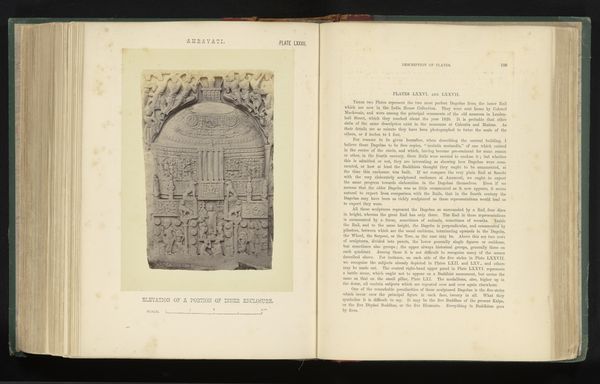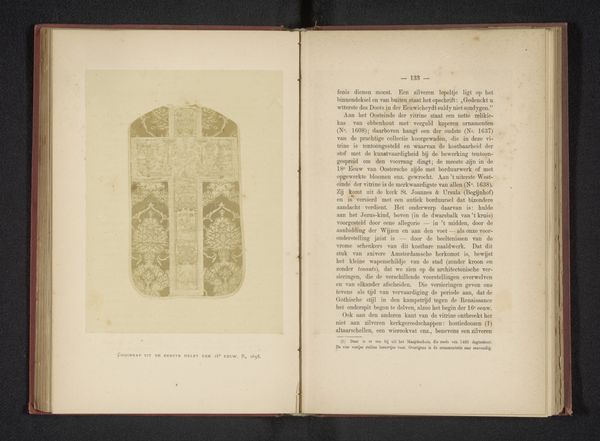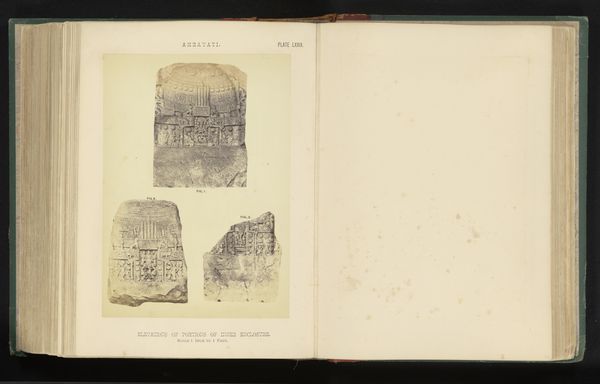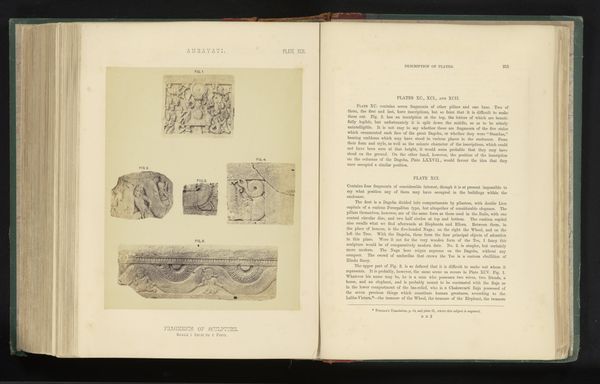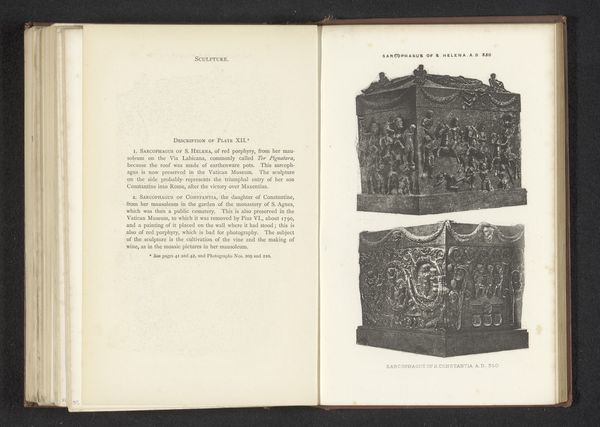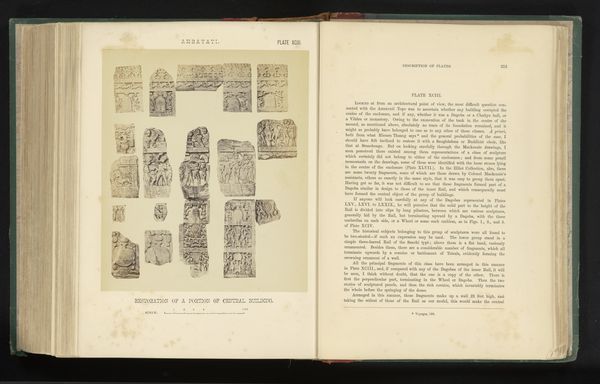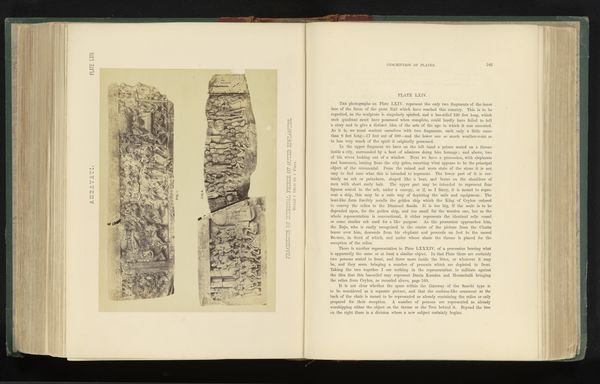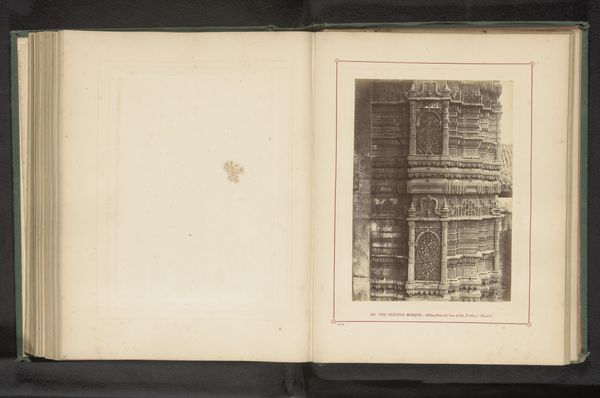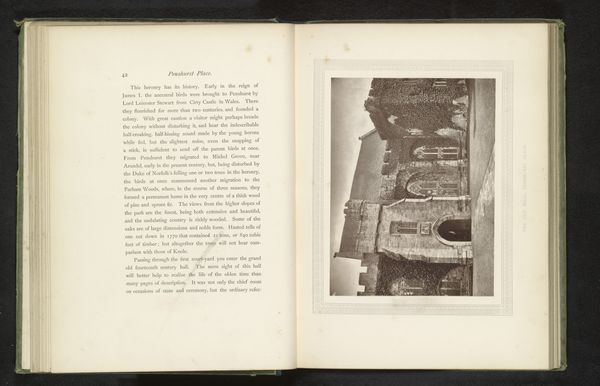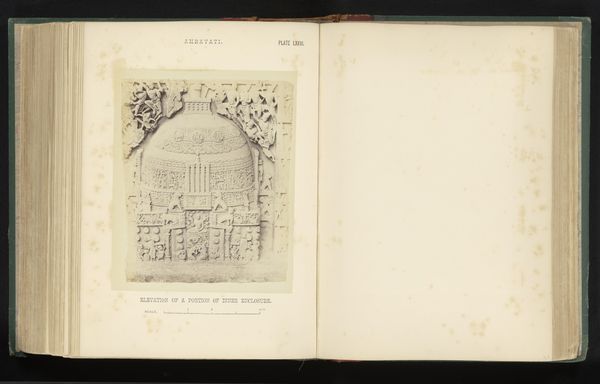
drawing, print, textile, paper, photography, collotype, engraving
#
drawing
# print
#
asian-art
#
textile
#
paper
#
photography
#
collotype
#
ancient-mediterranean
#
decorative-art
#
engraving
Dimensions: height 241 mm, width 187 mm
Copyright: Rijks Museum: Open Domain
Curator: We’re looking at a photograph of a page from what appears to be an archaeological record, featuring "Three Reliefs with Religious Depictions," dating from before 1868. The image shows collotype prints of what look like engraved reliefs. What stands out to you about this composition? Editor: Well, the prints themselves appear to be documenting something older and possibly eroded, I’d guess the source reliefs were important religious items. They feel both monumental and fragile. What does this photograph, acting as a document, tell us? Curator: This photograph doesn't just show us the reliefs, it shows us a specific mode of interacting with them. We need to consider the production and the reproduction of these images as a form of knowledge. Who was commissioning these collotypes, and for what purpose? How does the act of printing and disseminating these images affect their perceived value and authority? Editor: That’s an interesting way to look at it. So, the *reproduction* of these objects transforms them? Curator: Precisely. Think about the labor involved in each stage - quarrying the stone for the original reliefs, engraving, photographing, collotype printing, and binding the final publication. Each step involves different skill sets and socio-economic conditions, contributing layers of meaning to the final artifact. It also shifts these items across cultures, creating a new market for these ‘historical objects’. Does the print serve the religious function, or simply document that such items are created? Editor: I never really thought about how all those processes add meaning. Now I am curious what it means to produce these photographs documenting the engravings rather than exhibiting the original reliefs, especially in terms of making Asian Art visible within Western European society. Curator: Exactly! It's about understanding art as a product of complex material and social forces. Now we're looking beyond just the 'religious depiction', to understanding the networks of production that allow us to see it at all. Editor: So, by looking at the medium, the method, we are not only observing the object, but examining a kind of early global economy. Thank you!
Comments
No comments
Be the first to comment and join the conversation on the ultimate creative platform.

